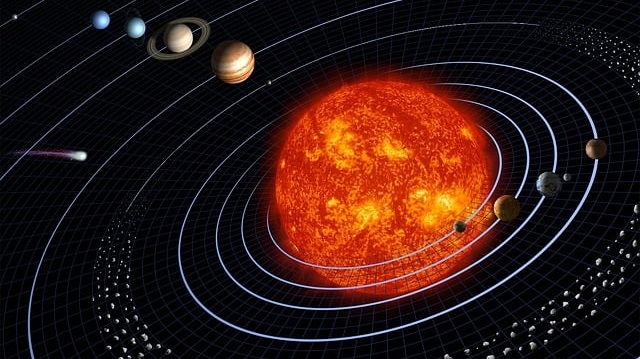Everything dies, including our own solar system. Suns don’t last forever. But the question is what the death of System Sol will look like when it comes.
First of all, relax! The end isn’t coming for another eight billion years.
Will you offer us a hand? Every gift, regardless of size, fuels our future.
Your critical contribution enables us to maintain our independence from shareholders or wealthy owners, allowing us to keep up reporting without bias. It means we can continue to make Jewish Business News available to everyone.
You can support us for as little as $1 via PayPal at office@jewishbusinessnews.com.
Thank you.
According to NASA, in another six billion years our Sun will hit its red giant phase and will run out of fuel in its core. As hydrogen fusion slows, the core once again begins to contract. As the core gets smaller, it heats up until can kick off another round of nuclear reactions, fusing helium into heavier elements such as carbon, nitrogen and oxygen. The hotter core also makes hydrogen fuse in the “shell” of material surrounding the core. Meanwhile, extra heat produced deep within in the star causes its outer layer of gas to puff up.
When the core of the former red giant has exhausted all of its fuel and shed all the gas it can, explains NASA, the remaining dense stellar cinder is called a white dwarf. The white dwarf is considered “dead” because atoms inside of it no longer fuse to give the star energy. But it still “shines” because it is so hot. Eventually, it will cool off and fade from view. Our Sun will reach this death about 8 billion years from now.
But what will happen to the Earth and all the other planets in our solar system before the Sun’s final death?
Professor Boris Gaensicke from the Department of Physics at the University of Warwick has the answer to this question. His new study if white dwarf systems found out a great deal.
“The simple fact that we can detect the debris of asteroids, maybe moons or even planets whizzing around a white dwarf every couple of hours is quite mind-blowing, but our study shows that the behavior of these systems can evolve rapidly, in a matter of a few years,” he said.
“While we think we are on the right path in our studies, the fate of these systems is far more complex than we could have ever imagined,” added Professor Gaensicke. “The system is, overall, very gently getting brighter, as the dust produced by catastrophic collisions around 2015 disperses. The unpredictable nature of these transits can drive astronomers crazy – one minute they are there, the next they are gone. And this points to the chaotic environment they are in.”
The good new is that planet Earth will suffer a quick death first as it will be incinerated when the Sun expands outward to a point wider that the Earth’s orbit of it.
“For the rest of the solar system,” said Professor Gaensicke, “some of the asteroids located between Mars and Jupiter, and maybe some of the moons of Jupiter may get dislodged and travel close enough to the eventual white dwarf to undergo the shredding process we have investigated.”




